Czechoslovakia. Constructions that are not inferior to the best world analogues
In September 1938, there were about 1,3 million people in the Czechoslovak armed forces: 26 divisions and 12 border areas, in terms of their number equivalent to infantry divisions and long-term fortifications intended for defense. However, the Czechoslovak army surrendered without a fight. As a result of the Munich Agreement, signed on 30 on September 1938, Germany annexed the Sudeten region, and in mid-March on 1939, the Czechoslovak leadership agreed to the dismemberment and occupation of the country. As a result, the Reichprotectorate of Bohemia and Moravia was created in the territory occupied by the Germans. At the same time, Slovakia was granted formal independence under the patronage of the Third Reich.
If not for the betrayal of politicians, the Czechoslovak army could have shown Germany serious resistance. So, according to archival data, the Germans got 950 combat aircraft, 70 armored trains, armored cars and railway artillery batteries, 2270 field guns, 785 mortars, 469 without a fight tanks, wedgies and armored vehicles, 43876 machine guns, more than 1 million rifles. It also captured more than 1 billion rounds and more than 3 million rounds. Czechoslovakia's air defense was provided by 230 medium-caliber anti-aircraft guns, 227 small-caliber anti-aircraft guns and 250 anti-aircraft machine-gun mounts. In the division of armies, Slovakia received 713 field guns, 24 anti-aircraft guns, 21 armored vehicles, 30 tankettes, 79 tanks and 350 aircraft (including 73 fighters).
The main fighter of the Czechoslovak Air Force was Avia B.534. This all-metal biplane with a closed cabin and a non-retractable landing gear had a normal take-off weight of 2120 kg, and with Hispano-Suiza 12YCRS liquid-cooled engine Xp. Hp developed in horizontal flight the maximum speed of 850 km / h. The plane was armed with four machine gun rifle caliber. The batch production of B.394 began in September 534. It was built by Avia, Aero and Letov. By the time of the Munich Agreement, the B.1934 was equipped with an 534 Fighter Squadron. The B.21 modification, which appeared in the summer of 634, was distinguished by improved aerodynamics. Armament aircraft consisted of 1936-mm motor-gun Oerlikon FFS 20 and two synchronous 20-mm machine guns vz.7,92. With the former engine power hp xnumx. The maximum speed of the fighter was 30 km / h.
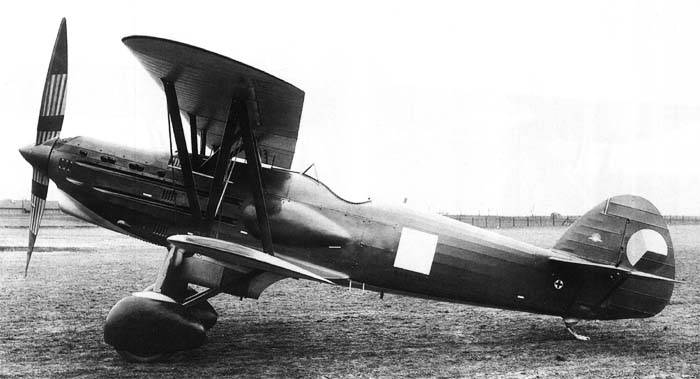
In March 1939, in Czechoslovakia, there were about 380 machine-gun and cannon biplanes in flight condition. For the mid-1930s, the B.534 was a very good fighter, not inferior in its characteristics to most foreign peers. It is believed that the Czech B.534 was hopelessly losing to the German all-metal monoplane Messerschmitt Bf.109. However, it should be borne in mind that the Bf.109, which began mass production in 1937, was at first very “raw” and the speed of the Bf.109В / С / D modifications did not have a particular advantage over the B.534, inferior in maneuverability. Other German fighters: He-51 and Ar-68 - inferior to B.534 in flight data and weapons. Despite approximately two-fold quantitative superiority, the German fighter aviation had no particular advantage in the quality of their machines. The Czechoslovak Air Force in 1938 was a strong adversary, and in order to defeat them, it could take considerable effort.
The Czech fighters captured by the Germans V.534 were operated mainly as training ones. In 1940, several captured biplanes were converted into training deck fighters, equipped with landing gear and equipment for taking off from catapults. For about two years, German pilots were trained there. They were preparing to fly from the deck of the Graf Zeppelin aircraft carrier. Until 1943, the V.534 served in the Luftwaffe units. They were mainly used as glider towers and occasionally for ground attack. Slovak V.534 in 1941 was accompanied by German bombers on the Eastern Front. In the summer of 1942, the few surviving biplane fighters attracted to fight the partisans.
Much more productively, the Germans used captured Czechoslovak anti-aircraft machine guns and cannons. After the occupation of Czechoslovakia in March 1939, Nazi Germany got over 7 000 machine guns ZB-26 and ZB-30.
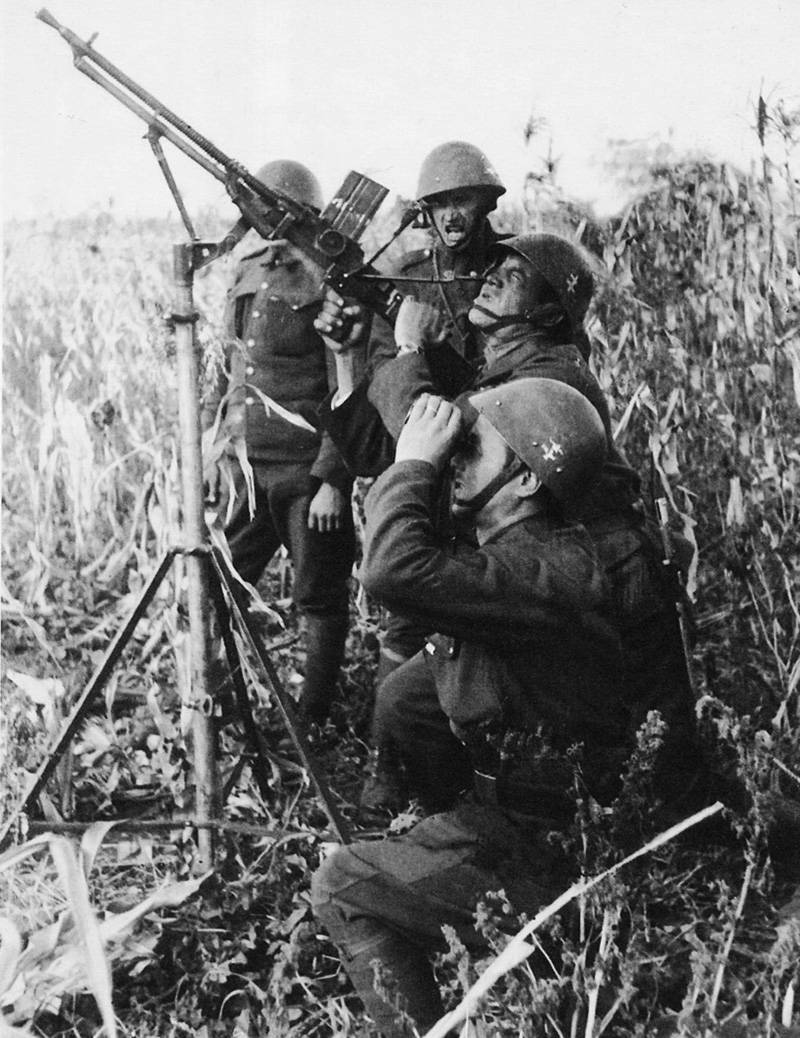
The ZB-26 light machine gun, created by designer Vaclav Holek, was adopted in 1926. From the very beginning in weapons used a German cartridge of 7,92 × 57 mm, but subsequently appeared export options for other ammunition. The automatics of the machine gun functioned due to the removal of part of the powder gases from the bore, for which a gas chamber with a regulator is located under the barrel in front of it. The barrel was locked by skewing the shutter in a vertical plane. The trigger mechanism allowed firing with single shots and bursts. With a length of 1165 mm, the weight of the ZB-26 without cartridges was 8,9 kg. Power was supplied from a box magazine for 20 rounds, inserted from above. The rate of fire is 600 rounds / min, but, due to the use of a small-capacity magazine, the practical rate of fire did not exceed 100 rounds / min.
The ZB-26 light machine gun and its later modification ZB-30 have established themselves as reliable and unpretentious weapons. Despite the fact that the ZB-26 was originally developed as manual, it was often installed on machines and light anti-aircraft tripods. Especially often light machine guns with anti-aircraft sights were used in the SS troops and the Slovak units, who fought on the side of the Germans. Czech-made light machine guns, due to the relatively low rate of fire and stores on 20 rounds, were not optimal for firing at aerial targets, but their big plus was their low weight and reliability.
After the occupation, the Germans had more than 7 000 machine guns ZB-26 and ZB-30. Czech light machine guns in the armed forces of the Third Reich were designated MG.26 (t) and MG.30 (t). The production of light machine guns at Zbrojovka Brno continued until 1942. MG.26 (t) and MG.30 (t) were mostly used by the German occupation, security, and police units, as well as by the Waffen-SS. Total German armed forces adopted 31204 Czech machine guns. In the presence of a light anti-aircraft tripod, the ZB-26 and ZB-30 light machine guns could serve as an anti-aircraft platoon link, which increased the defense potential of the leading edge in defense.
No less famous than the manual received the machine gun ZB-53. This weapon was also designed by Vaclav Cholek chambered for 7,92 × 57 mm. The official adoption of the ZB-53 was adopted in 1937 year. Machine gun automatics worked due to removal of a part of powder gases through a side opening in the barrel wall. Locking the bore by skewing the shutter in a vertical plane. In case of overheating, the barrel could be replaced. The mass of the machine gun with the machine was 39,6 kg, length - 1096 mm. For anti-aircraft fire machine gun mounted on a swivel folding retractable racks of the machine. Anti-aircraft sights consisted of a ring sight and rear viewfinder. For firing at air targets, the machine gun had a firing rate switch from 500 to 800 rds / min. Due to its relatively low weight for the heavy machine gun, high quality workmanship, good reliability and high accuracy of firing, the ZB-53 was popular with the troops.
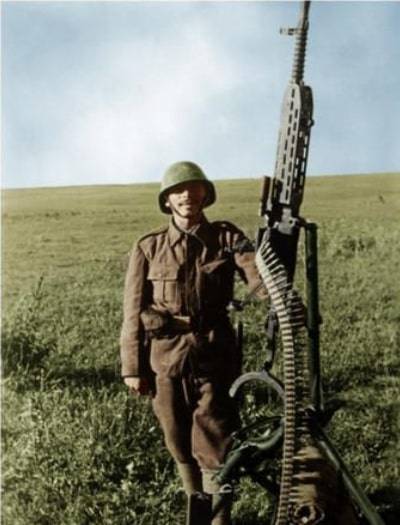
In the armed forces of fascist Germany, ZB-53 was called MG.37 (t). In addition to the Wehrmacht and the SS troops, the Czech machine gun was widely used in the armies of Slovakia and Romania. The German command as a whole was satisfied with the characteristics of the machine gun, but according to the results of combat use it was necessary to create a lighter and cheaper sample, and when firing at aerial targets, bring the pace to 1350 shots / min. The specialists of Zbrojovka Brno, in accordance with these requirements, created several experimental models, but, after the production of the ZB-53 was discontinued in 1944, their development was stopped. Although the ZB-53 was deservedly considered one of the best heavy machine guns in the world, too high manufacturing complexity, metal consumption and high cost of production forced the Germans to abandon the continuation of its production and reorient the Brno arms factory to release MG.42. In total, representatives of the German Ministry of Weapons adopted 12 672 heavy machine guns of Czech production.
Manual and easel rifle-caliber machine guns mounted on light anti-aircraft tripods made it possible to fight enemy aircraft at a distance of up to 500 m. However, due to the increased flight speed and security of combat aircraft, more powerful anti-aircraft weapons were needed in the future. Shortly before the dismemberment and occupation of Czechoslovakia, a large-caliber 15-mm ZB-60 machine gun was adopted. The limited production of 15-mm machine guns at Škoda began in 1937. This weapon was originally developed as an anti-tank, but after installation on a universal wheeled-tripod machine it was possible to fire at air targets.
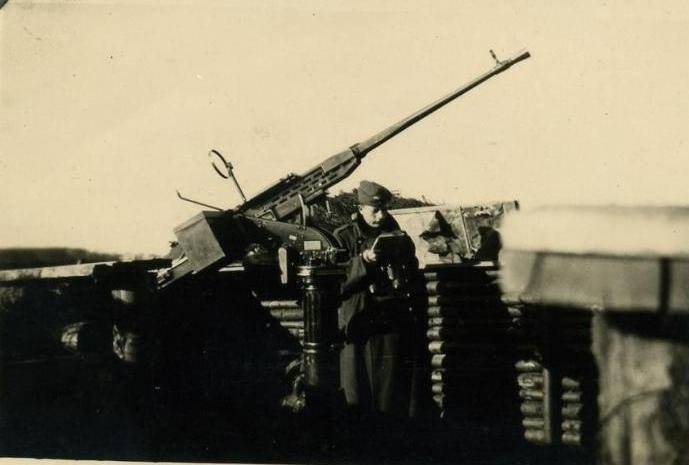
Machine gun ZB-60 in position for anti-aircraft shooting at the firing position of the "Atlantic Wall"
The design and operation of the automation were in many respects similar to the 7,92-mm machine gun ZB-53, but the rate of fire was significantly less - 420-430 rds / min. For firing 15-mm BESA machine gun used a tape on 25 cartridges, which limited its practical rate of fire. The body weight of the machine gun ZB-60 without a machine and ammunition is about 60 kg. The total mass of weapons on the universal machine exceeded 100 kg. Length - 2020 mm. The original 15 × 104 mm cartridge with a muzzle energy of about 31 kJ was used for shooting. The initial speed of a bullet with a mass of 75 g was 895 m / s - this ensured a long direct shot range and excellent armor penetration. Ammunition ZB-60 could include ammunition: with ordinary, armor-piercing and explosive bullets.
For quite a long time, Czech military officials could not decide whether they needed this weapon. The decision on the mass production of 15-mm machine guns after repeated tests and modifications was made only in August 1938. However, before the German occupation, only a few dozen 15-mm machine guns were produced for their own needs. No more than a hundred ZB-60 were assembled before the 1941 of the year at the Škoda company, which, under the German administration, became known as Hermann-Göring-Werke. Subsequently, the Germans also captured a number of British 15-mm BESA machine guns, which are the licensed version of the ZB-60. Due to the limited amount of ammunition for captured 15-mm machine guns, during the Second World War, the German-controlled enterprises launched the production of 15-mm cartridges. The same bullets were used as for the MG.151 / 15 aircraft machine guns. This approach made it possible, thanks to partial unification, to reduce costs in the production of ammunition. Since these German 15-mm bullets had a leading belt, they were structurally shells.
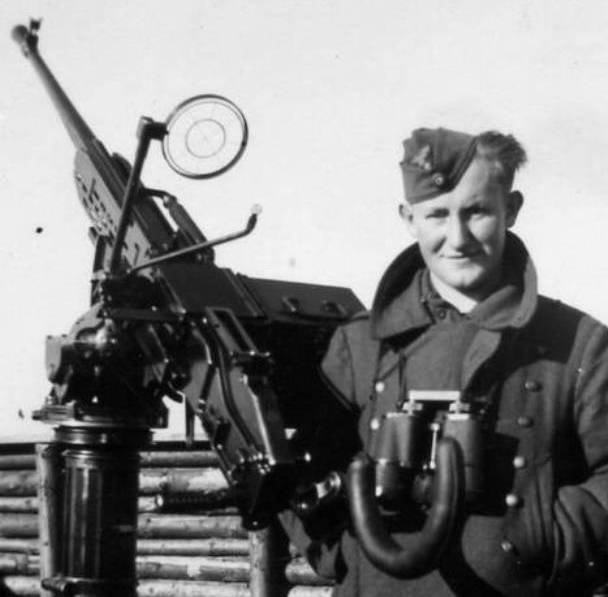
Machine guns used parts of the SS, Luftwaffe anti-aircraft gunners and Kringsmarine. In German documents, this weapon was called MG.38 (t). The refusal of further production of 15-mm machine guns was due to their high cost and the desire to free production facilities for weapons developed by German designers. In addition, the ZB-60 had a not too successful machine, which had low stability when conducting intensive anti-aircraft fire, as a result of which the queue length when firing at air targets was limited to 2-3 shots. Although the ZB-60 had a very high potential and its characteristics were comparable to the Soviet 14,5-mm machine gun CPV, adopted after the war, due to the saturation of the German army 20-mm anti-aircraft guns and the high cost of production from the modernization and further production of 15-mm machine guns refused.
The first small-caliber rapid-fire anti-aircraft guns in the Czechoslovak armed forces appeared in 1919, ”in Bavaria 47 20-mm Becker guns were acquired (according to Czechoslovak terminology -“ large-caliber machine guns ”) and more than 250 thousand cartridges for them. Becker's guns were supposed to be used as an air defense weapon for infantry units, but weak 20x70 mm ammunition with an initial projectile speed of about 500 m / s limited the effective firing range. Power was supplied from a detachable magazine on 12 shells. With a length of 1370 mm, the body weight of the 20-mm gun was just 30 kg, which allowed it to be mounted on a lightweight anti-aircraft tripod. Although by the end of the 1930s, the Becker gun was hopelessly outdated, as of March 1939, there were 29 such anti-aircraft guns in Czechoslovakia. They were planned to be used for air defense crossings. Subsequently, they all went to Slovakia.
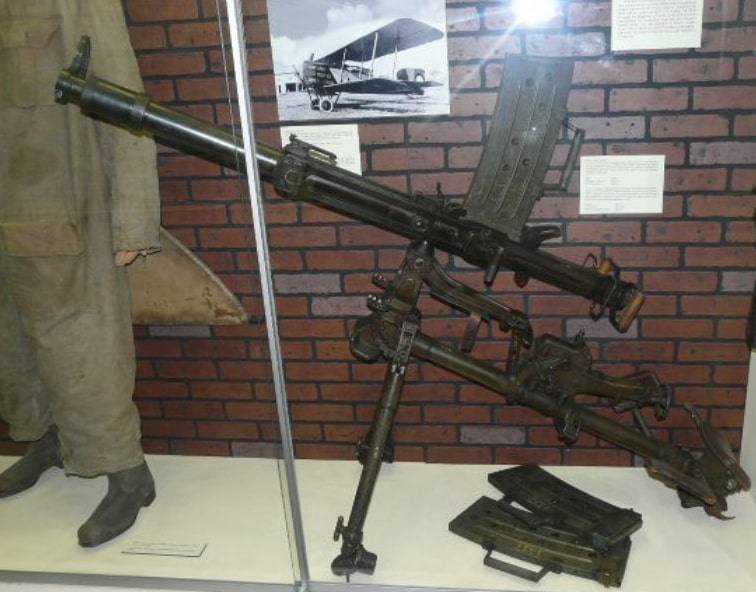
In addition to Becker’s cannons, the Czechoslovak army had more than 200 20-mm anti-aircraft installations 2cm VKPL vz. 36 (2-cm heavy anti-aircraft machine gun armature. 36). This universal 20-mm automatic gun was developed by the Swiss company Oerlikon in the 1927 year on the basis of the Becker’s 20-mm gun. In Switzerland, the weapon had the designation Oerlikon S. 20-mm machine gun was created under the cartridge 20 × 110 mm, with an initial velocity of a projectile with a mass of 117 g - 830 m / s. Store capacity - 15 shots. Rate of fire - 450 rds / min. Practical rate of fire - 120 rds / min. In the advertising brochures of the company "Oerlikon" it was stated that the height reach is 3 km, in range - 4,4 km. The real affected area was about two times smaller. Vertical guidance angles: -8 ° to + 75 °. Tool weight without machine - about 70 kg. Installation weight in transport position - 295 kg. Calculate 7 people.
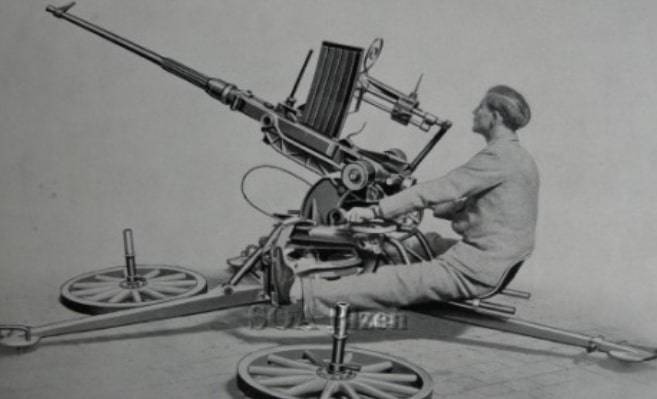
The first batch of 12 advanced Oerlikon was purchased in 1934 year. Until September 1938, the front-end units had 227 anti-aircraft guns VKPL vz. 36, still 58 installations were available in warehouses. It was supposed to acquire a 424 20-mm machine.
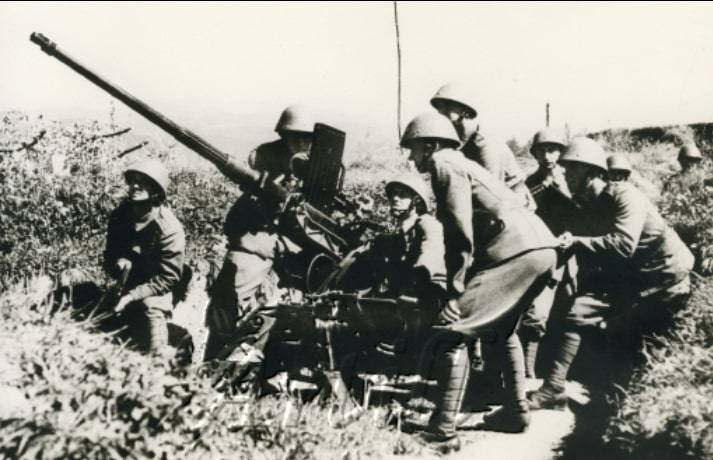
Available 2cm VKPL vz. 36 reduced the air defense mouth to the 16. The 20-mm “heavy machine guns” mainly entered the “Fast” (Motorized) divisions and were transported in the back of the Tatra T82 two-ton truck. After arriving at the firing position, the anti-aircraft installation was transferred to the ground by the forces of calculation. A special pedestal was installed on the platform of the Tatra T85 four-ton truck, after which it was possible to fire without dismantling the installation. Thus, in Czechoslovakia it was the first ZSU, suitable for escorting convoys.
20-mm anti-aircraft gun 2cm VKPL vz. 36 was the only modern small-caliber air defense system of the Czechoslovak army, the license for 40-mm Bofors L60 anti-aircraft gun was issued, but deliveries were to begin only in 1939 year. In March 1939, the Wehrmacht got 165 anti-aircraft installations 2cm VKPL vz. 36, another 62 "inherited" the Slovak army. Guns VKPL vz. 36 were standardized on ammunition with the German Flak 28, and they were used mainly for air defense of airfields. Despite the presence of more modern 20-mm flak 38 anti-aircraft guns, the operation of 2cm VKPL vz. 36 continued until the end of hostilities. The latest Swiss-made 20-mm anti-aircraft guns were decommissioned in Czechoslovakia in the 1951 year.
During the Second World War, the Czech Republic became a real forge of weapons for Germany. By June 1941, the German units were almost a third equipped with Czech weapons. Having annexed the Czech Republic, the Germans received a very large production capacity of heavy industry, thanks to which they doubled the production of military equipment and weapons. Plus, these new facilities were located in the depths of the European continent and, unlike the Ruhr, until the 1943, they were safe with respect to the air raids carried out from the UK. Until 15 in March, 1939, the Czech industry, especially heavy, worked at approximately 30% of its potential - orders for its products were too small and occasional. Entry into the Reich breathed new forces into all Czech factories — orders poured out of a horn of plenty. BMM, Tatra and Skoda enterprises for the German army collected tanks, self-propelled guns, armored personnel carriers, artillery guns, tractors and trucks. The Avia plant conducted the production of components for the assembly of Messerschmitt Bf 109G fighters. The hands of the Czechs collected a quarter of all German tanks and self-propelled guns, 20 percent of trucks and 40 percent of small arms of the German army. According to archival data, at the beginning of 1944, the Czech industry, on average, supplied the Third Reich with monthly 100 self-propelled artillery, 140 infantry guns, 180 anti-aircraft guns.
In the Czech design offices and laboratories for the German armed forces during the war years, new types of military equipment and weapons were developed. In addition to the well-known PT SAU Hetzer (Jagdpanzer 38) on the chassis of the tank PzKpfw 38 (t) (LT vz.38) a family of ZSUs with 20-30-mm anti-aircraft guns was created and mass-produced. The prototype of the Flakpanzer 38 self-propelled self-propelled unit (t) was designed by BMM specialists, and was put to the test in the summer of the 1943.
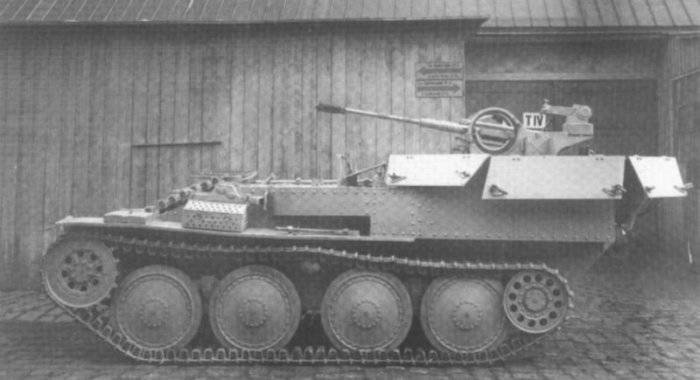
ZSU Flakpanzer 38 had a layout with the location of the transmission compartment in the frontal part of the hull, the department of management behind it, the engine compartment in the middle part of the case and the fighting - in the aft. The fixed cabin, which was open at the top, was located in the aft part of the hull, its walls were assembled from 10-mm armor plates and provided protection against bullets and fragments. The upper parts of the cabin walls reclined, which provided a free sector of fire for anti-aircraft automatic gun. The crew of ZSU consisted of four people. The 20-mm anti-aircraft gun was located on the floor of the fighting compartment on a stand with circular rotation and vertical guidance within −5 ... + 90 °. Ammunition was 1040 unitary shots in stores for 20 units. Firing Rate Flak 38 - 420-480 shot / min. The firing range of air targets is up to 2200. M. 150 hp carburetor engine on the highway, I drove up a tracked vehicle with a weight in the combat position of 9800 kg - to 42 km / h. Cruising over rough terrain - about 150 km.
The Flakpanzer 38 ZSU (t) was in mass production from November 1943 to February 1944. Total was built 141 self-propelled self-propelled gun. The Flakpanzer 38 (t) ZSU was mainly sent to anti-aircraft platoons (4 installations) of tank battalions. In March, the Flakpanzer 1945 (t) 38-mm 20 cannon Flak 2,0 replaced the 38-mm 30 cm Flak 3,0 / 103 on several Flakpanzer 38 anti-aircraft tanks. At least two such cars in May 1945, participated in the battles on the territory of Czechoslovakia and were captured by Soviet troops. Externally, an anti-aircraft tank with a 30-mm anti-aircraft gun, based on the MK.103 air cannon, was almost the same as the standard-made Flakpanzer 38 (t) ZSU.
By order of Kriegsmarine, the Waffenwerke Brünn enterprise (this is how Zbrojovka Brno was called during the occupation) designed the 30-mm coaxial anti-aircraft installation designed to arm submarines and small displacement ships.
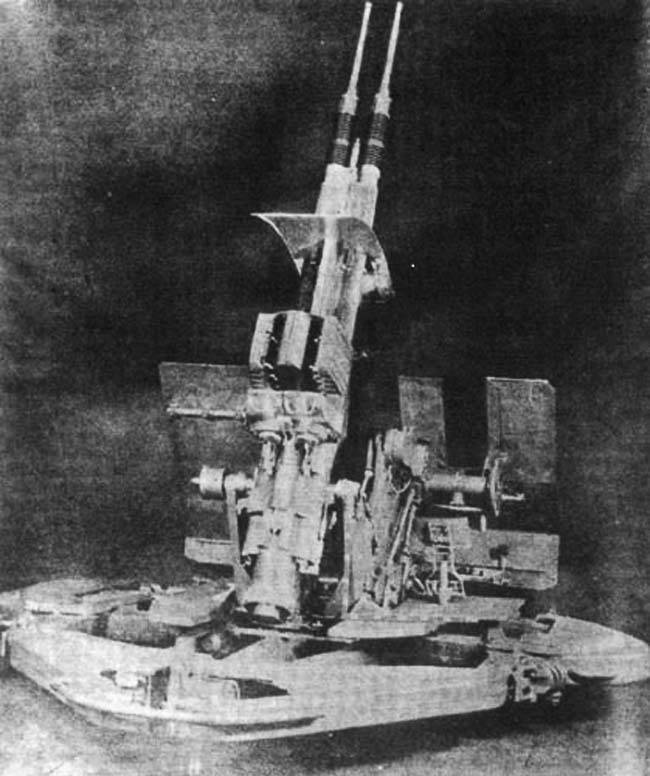
In the autumn of 1944, the mass production of twin 3,0 anti-aircraft installations with MK 303 (Br), also known as 3,0 with Flakzwilling MK 303 (Br), began. The new anti-aircraft gun had a system for delivering ammunition from stores on 10 shells, with a rate of firing from two barrels to 900 rounds / min. Compared to the German 30-mm 3,0 anti-aircraft gun, the Flak 103 / 38 twin-mount unit created in the Czech Republic had a much longer barrel, which allowed increasing the initial velocity of the projectile to 900 m / s and bringing the range of effective fire on the air target to 3000 m. Although the originally paired 30-mm anti-aircraft gun was intended for installation on warships, most of the 3,0 cm Flakzwilling MK 303 (Br) was used in land stationary positions. Before the German capitulation to the troops, it was possible to transfer more than 220 anti-aircraft installations 3,0 сm MK 303 (Br).
In 1937, Skoda offered the military 47-mm anti-aircraft gun 4.7 cm kanon PL vz. 37, based on the anti-tank 47-mm gun PUV vz. 36. The gun with a barrel length 2040 mm fired fragmentation-tracer projectile mass 1,6 kg with an initial speed 780 m / s. Reach in height was 6000 m. Rate of fire - 20 rds / min. To ensure circular fire and better stability, the gun had four supports, the axles of the wheels served as two supports, and two more supported on jacks. The mass of the gun in the combat position - about 1 t.
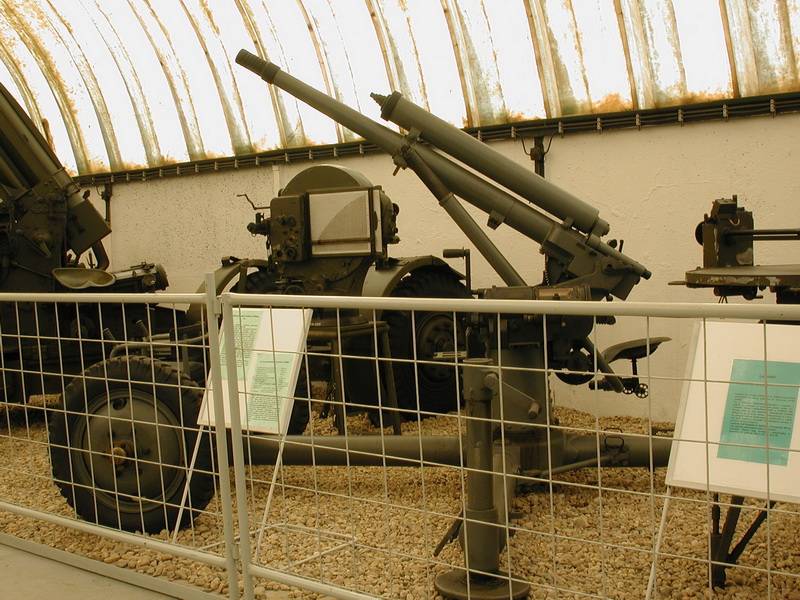
Because of the relatively low rate of fire, the 47-mm anti-aircraft gun didn’t interest the Czechoslovak military, who preferred the Bofors L40 anti-aircraft gun. But after mass production began on the order of Yugoslavia, a small amount of 60 cm kanon PL vz. 4.7 still got into the armed forces of Czechoslovakia. In the German army, this weapon was called 37cm FlaK 4.7 (t) and was used in coastal defense. In 37, Skoda tested the 1938-mm automatic cannon, but after the German occupation, work in this direction was turned off.
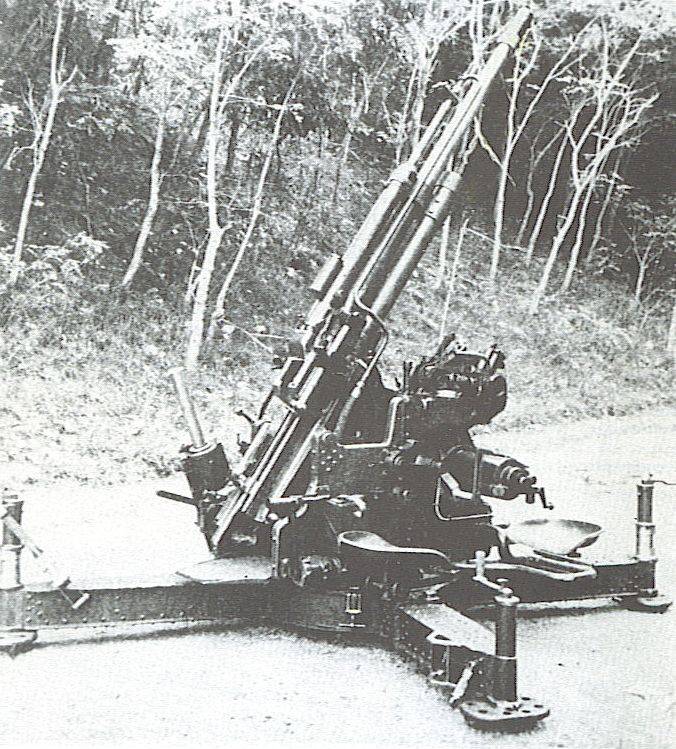
In the first years after the formation of the national armed forces in Czechoslovakia, Austro-Hungarian 76,5-mm anti-aircraft guns 8cm Luftfahrzeugabwehr-Kanone M.5 / 8 MP were used by the Škoda engineers by overlaying the XNHX M XNHX M field gun barrel. . The barrel of the gun had a unique feature for the beginning of the 1905 of the 20th century - for its manufacture it was used “Bronze Thiele”, also called “steel-bronze”. The barrel was manufactured using a special technology: punches of a slightly larger diameter than the barrel itself were consistently driven through the drilled trunk bore. As a result, sediment and compaction of the metal occurred, and its inner layers became much stronger. This barrel did not allow the use of large charges of gunpowder (due to lower strength compared to steel), but did not corrode and rupture, and most importantly, cost much less. The barrel had 08 gauges in length. The recoil device consisted of a hydraulic recoil brake and spring-loaded knurling.
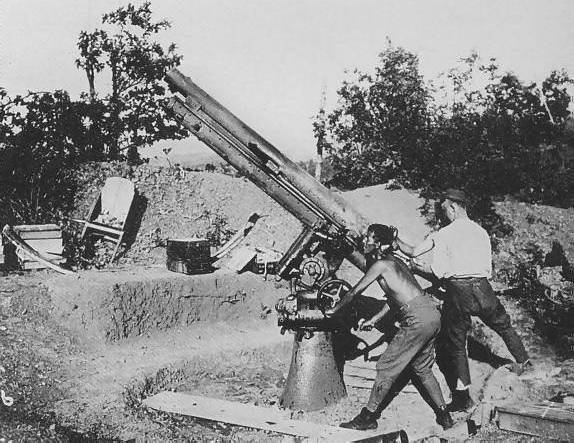
In combat, the anti-aircraft gun weighed 2470 kg and had a circular horizontal fire, and the angle of vertical pickup ranged from −10 ° to + 80 °. Effective range of air targets - up to 3600 m. Rate of fire 7-9 rds / min. For firing at air targets, shrapnel was used, which weighed 6,68 kg, and had an initial speed of 500 m / s. It was filled with 316 bullets of mass 9 g and 13 g. Initially, the gun did not have a wheeled gun mount and was intended for use in stationary positions. In 1923, a four wheeled wagon was developed for an anti-aircraft gun, which made it possible to significantly reduce the position change time. The attempt to modernize the hopelessly outdated anti-aircraft gun, based on the field gun, developed in 1905, did not give any special results. By 1924, modernized 76,5-mm anti-aircraft guns equipped 3 anti-aircraft batteries, but the effectiveness of firing shrapnel shells with low initial speed remained low. However, the M.5 / 8 stationary and mobile anti-aircraft guns remained in service until the 1939 year. There is information that subsequently these guns were used by the Germans in the fortifications of the Atlantic Wall.
In the future, from 1928 to 1933 year limited edition series were released 8cm Kanon PL vz. 33 (Skoda 76.5 mm L / 50) with an extended steel barrel and an improved shutter. The shooting was carried out by a fragmentation grenade mass 6,5 kg, with an initial speed 808 m / s. Rate of Fire - 10 — 12 rds / min. Reach height - 8300 m. Vertical guidance angles - from 0 to + 85 °. The weight of the gun in the combat position 2480 kg.
In contrast to the anti-aircraft guns of the First World War, the fire control of the anti-aircraft battery was carried out centrally using an optical rangefinder and PUAZO. In 1939, the Germans got 12 of such anti-aircraft guns, adopted under the designation 7,65 cm Flak 33 (t).
In the second half of the 1930, Skoda attempted to drastically improve the performance of the 76,5-mm anti-aircraft gun. In the 1937 year, after the official adoption of the weapons began production of anti-aircraft 8cm Kanon PL vz. 37.
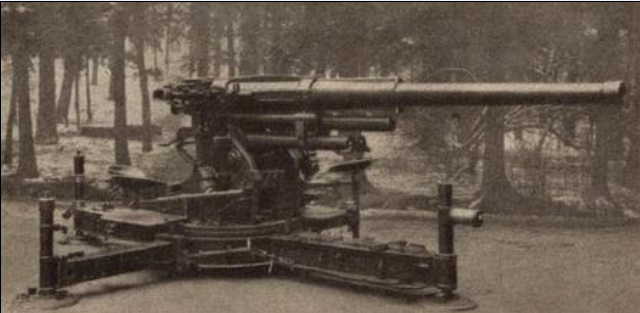
It was quite a modern anti-aircraft gun with a wedge gate, separated by a wheel drive. Compared with Kanon PL vz. 33 barrel length has been increased 215 mm. In a combat position, it was posted on jacks on four sliding supports. Wheel drive was sprung. Used for shooting frag grenade designed for 8cm Kanon PL vz. 33. The rate of fire 12-15 rds / min. The maximum range of fire on air targets - 11400 m. The angles of the vertical pickup - from 0 to + 85 °. Between the fall of 1937 and March 1939, the troops received 97 76,5-mm anti-aircraft guns 8cm Kanon PL vz. 37. Subsequently, they were divided between Germany and Slovakia. In Germany, these guns were designated 7.65cm Flak 37 (t).
Simultaneously with the 76,5-mm anti-aircraft gun Skoda 76.5 mm L / 52 created 75-mm gun 7.5 cm kanon PL vz. 37, which used an 75 x 656mm R shot with a fragmentation grenade mass of 6,5 kg, leaving the barrel at a speed of 775 m / s. Vertical reach was 9200 m. The rate of fire of 12-15 rds / min. The weight of the gun in the combat position - 2800 kg, in the marching - 4150 kg.
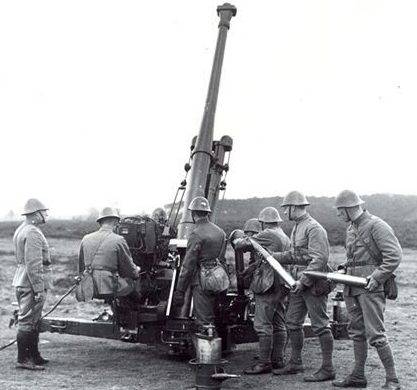
Apparently, the 75-mm anti-aircraft gun, produced in parallel with the 76,5-mm anti-aircraft gun Skoda 76.5 mm L / 52 was intended for export deliveries. Outwardly, these two artillery systems were very similar, they can be distinguished by the muzzle. The barrel of the 75-mm anti-aircraft gun ended in a muzzle brake of characteristic shape.
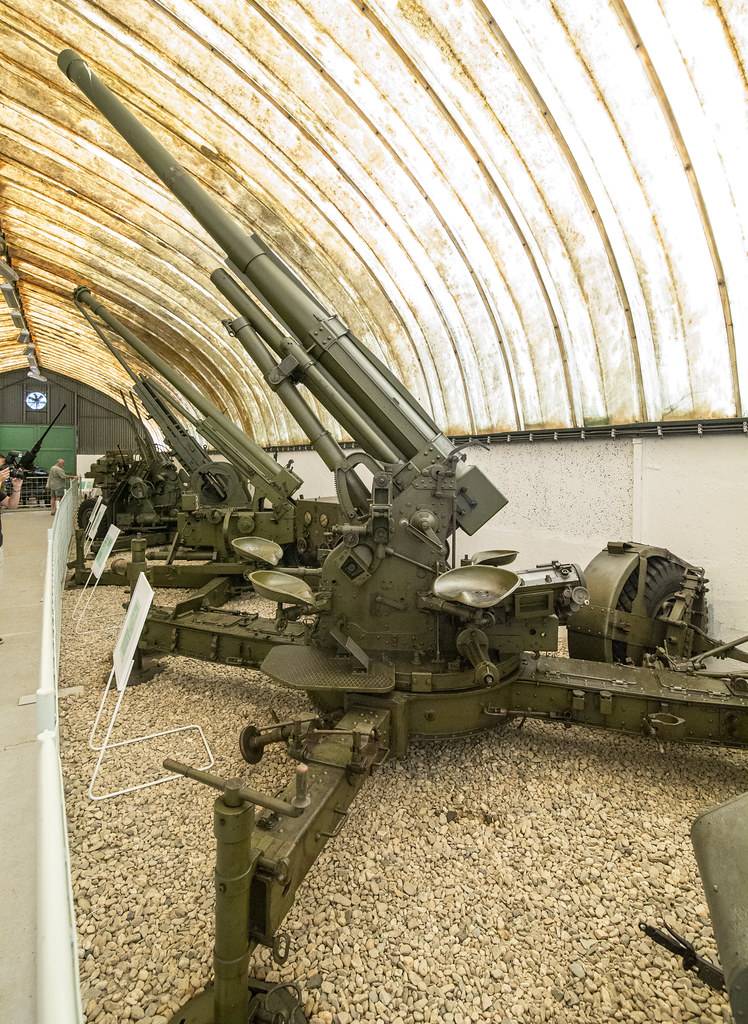
75-mm anti-aircraft guns were exported to Argentina, Lithuania, Romania and Yugoslavia. The Germans managed to capture 90 75-mm Czech anti-aircraft guns. Partially they were transferred to Italy and Finland. In Germany, they were called 7,5 cm. Flak M 37 (t). As of September 1944, there were 12 such guns in the anti-aircraft parts of the Luftwaffe.
In 1922, military testing of the 83,5-mm anti-aircraft guns began. In 1923, it entered service under the designation 8.35 cm PL kanon vz. 22. The 8800 kg gun was developed by Skoda designers based on the possibility of horse-drawn carriage with a maximum increase in caliber. It can be argued that for the beginning of the 1920-s, Czech engineers managed to create the best anti-aircraft gun in its class.
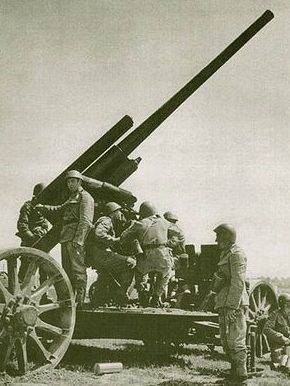
For shooting based on the experience of using 76,5-mm 8cm anti-aircraft guns 5cm Luftfahrzeugabwehr-Kanone M.8 / 83,5 MP 677X10mm R was developed with 4,6 kg fragmentation grenade equipped with a remote fuse. The projectile left the barrel length 800 m with an initial speed 11000 m / s. This made it possible to hit air targets at altitudes up to 12. The rate of fire is up to 0 rds / min. Vertical guidance angles - from 85 to + 11 °. Calculate XNUMX people.
The Czechoslovak Army ordered 144 guns, with a set of spare barrels. The order was fully completed in 1933, after which they began to offer 83,5-mm anti-aircraft gun for export. The only foreign buyer was Yugoslavia, which, apparently, was due to the high cost of making tools.
In the middle of the 1930-x it became clear that the anti-aircraft gun 8.35 cm PL kanon vz. 22 no longer fully meets modern requirements. The military was not satisfied with the low speed of transportation, due to horse-thrust and 1,3 m unsprung wheels with a steel rim. In connection with the increase in the speed of flight of combat aircraft, improvement also required the method of controlling the anti-aircraft battery. In 1937, a number of measures were taken to improve the efficiency of the 83,5-mm anti-aircraft guns. At the disposal of the commanders of the guns, field telephones appeared on which information about altitude, speed and course of the target could be transmitted. The composition of the anti-aircraft battery introduced an improved optical rangefinder post. Each battery had 4 guns. Two or three batteries, deployed close to each other, were given spotlight installations and sound finders.
In Czechoslovakia, great attention was paid to the level of training of anti-aircraft gunners. In 1927, after the conclusion of an agreement with friendly Yugoslavia, an antiaircraft gun was built in the Bay of Kotor. Anti-aircraft guns fired at the cones towed by the Letov S.328 biplanes. Until September, 1938, the 83,5-mm anti-aircraft guns formed the basis of the Czechoslovak anti-aircraft defense. In total, the Czechoslovak army had four anti-aircraft artillery regiments equipped with 8.35 cm PL PL kanon vz guns. 22.
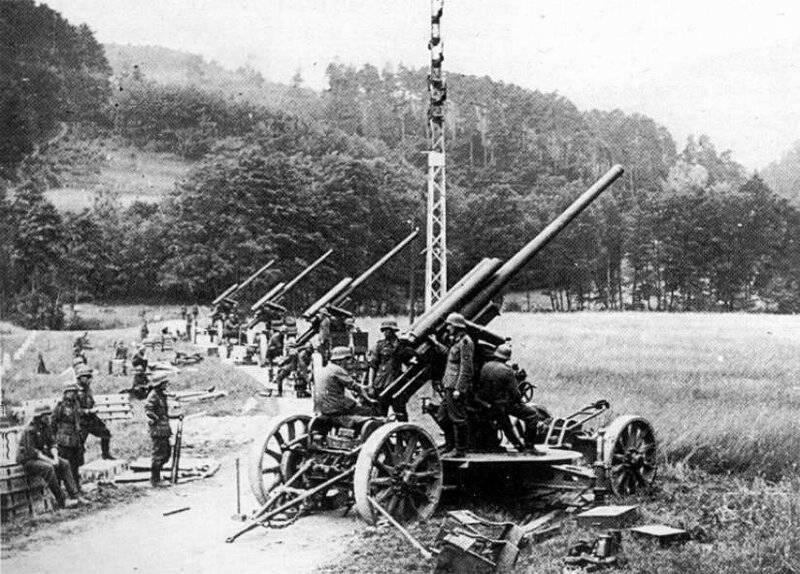
After the occupation, the Wehrmacht received 119 83,5-mm anti-aircraft guns and almost 315 thousand shells, and 25 83,5-mm anti-aircraft guns were transferred to Slovakia. In Germany, the guns were labeled 8.35 cm Flak 22 (t). Czech sources claim that for the first time the Germans used captured anti-aircraft guns against French pillboxes on the Maginot Line. During the Second World 83,5-mm anti-aircraft guns were mainly deployed in Poland, the Czech Republic and Austria. A dozen and a half fell into the fortifications of the Atlantic Wall, where they could fire not only on planes, but also on ships. In 1944, a number of 83,5-mm rounds equipped with armor-piercing blanks were fired at Czech factories, on the basis of which it can be assumed that Czechoslovak-made anti-aircraft guns were used against Soviet tanks.
A 90-mm anti-aircraft gun 9cm PL kanon vz was intended for use in stationary positions. 12/20. Initially, the product of the Skoda company, model 1912, was developed by order of the Austro-Hungarian fleet as an auxiliary caliber cruisers. In 1919, eight 90-mm guns taken from warehouses were placed at positions along the Danube. At the first stage, their main purpose was to counteract possible attacks by Hungarian monitors, and the fight against an air opponent was considered as a secondary task. Since the guns were powerful enough, it was decided to upgrade them. In 1920, small-scale production of 90-mm guns with improved sights and aiming drives began. Also in service was a new fragmentation grenade with a remote fuse. Twelve newly manufactured anti-aircraft guns 9cm PL kanon vz. 12/20 entered service with the 151st anti-aircraft artillery regiment of the three-battery composition. Subsequently, it included previously manufactured and thoroughly repaired 90 mm guns, as well as four stationary 8cm Luftfahrzeugabwehr-Kanone M.5 / 8 MP
Mass of the gun 9cm PL kanon vz. 12 / 20 in combat was 6500 kg. Barrel length - 4050 mm. Vertical pickup angles range from -5 to + 90 °. Projectile weight - 10,2 kg. Initial speed - 770 m / s. Reach height - 6500 m. Rate of fire - 10 rds / min. Calculation - 7 people.
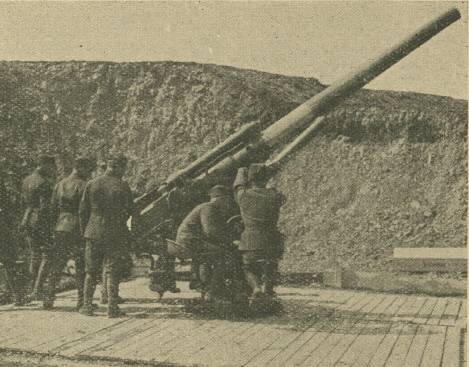
Although the number of 90-mm stationary anti-aircraft guns in Czechoslovakia was small, they were used in a number of experiments, which made it possible to accumulate necessary experience and work out anti-aircraft gun control techniques, which, in turn, was taken into account when designing more modern anti-aircraft guns. For its time guns 9cm PL kanon vz. The 12 / 20 were among the most powerful, but by the end of the 1930-xNNXX-mm anti-aircraft guns were outdated. The Germans in March 90 got twelve 1939-mm guns and more than 90 thousand shells. Until a certain point, they were stored in warehouses, but due to the deterioration of the situation at the front at the end of 26, anti-aircraft guns were again put into operation under the designation 1943cm Flak M 9 (t).
To be continued ...
Information